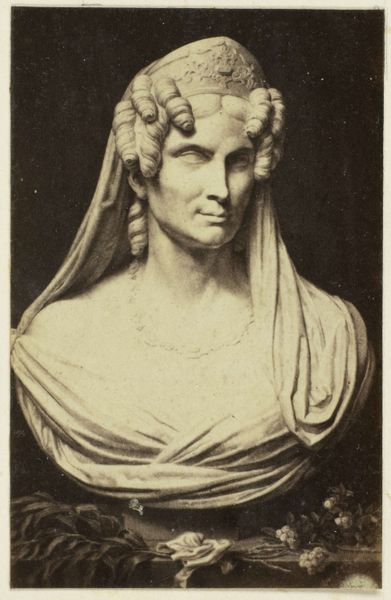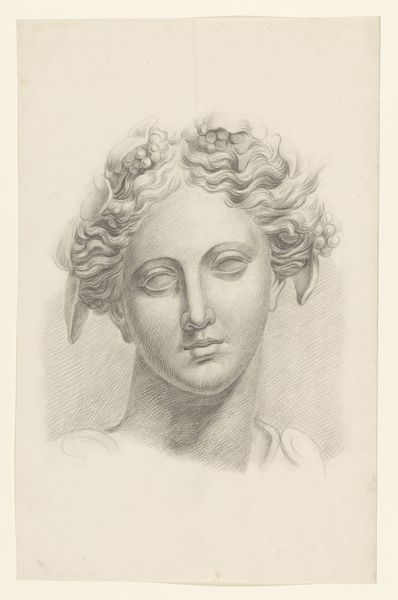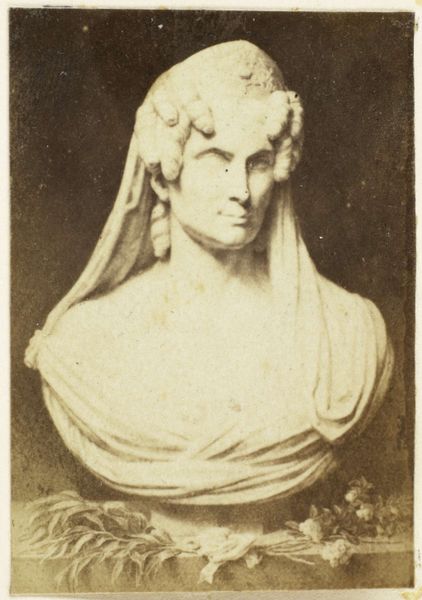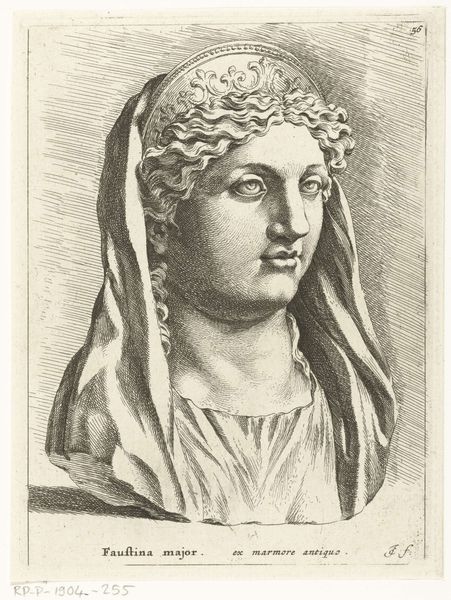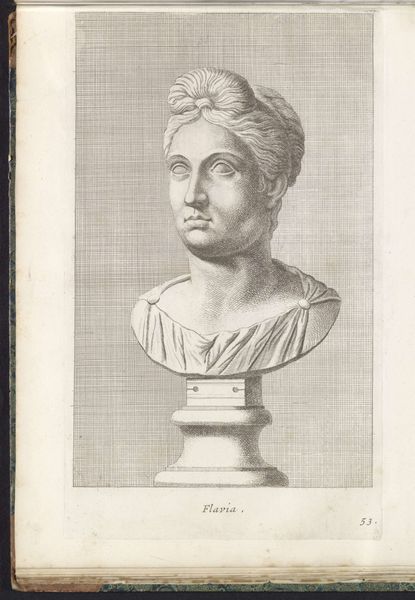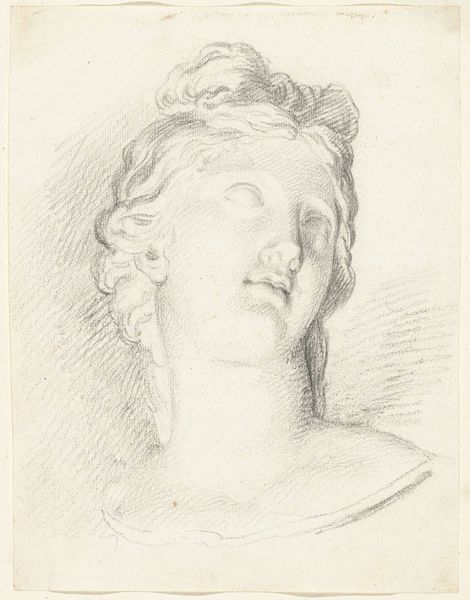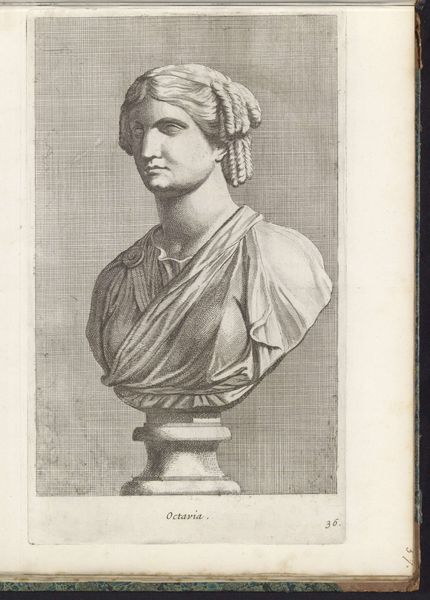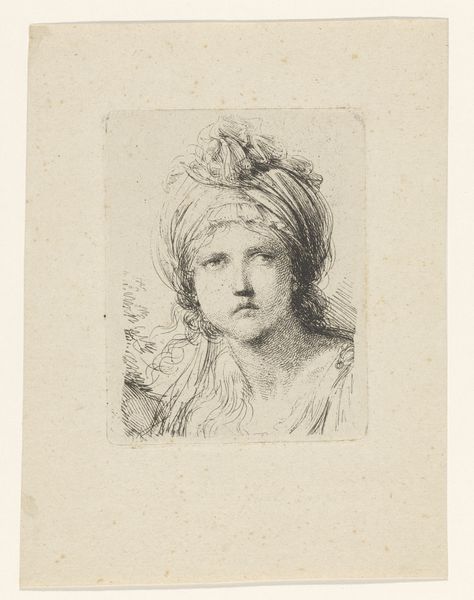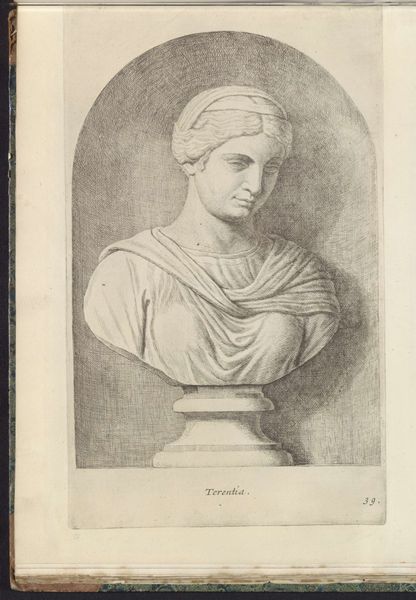
drawing, pencil
#
portrait
#
drawing
#
neoclacissism
#
pencil sketch
#
classical-realism
#
pencil drawing
#
pencil
#
portrait drawing
#
portrait art
Dimensions: height 287 mm, width 192 mm
Copyright: Rijks Museum: Open Domain
Editor: Here we have Henricus Wilhelmus Couwenberg's pencil drawing, "Buste van Wilhelmina van Pruisen," created sometime between 1824 and 1845. It feels very formal and neoclassical. I'm struck by how it's a drawing *of* a bust; it's art about art. How do you interpret this work, especially in terms of its historical context? Curator: That's an interesting observation! Thinking historically, this drawing performs several roles. The bust itself is a form that elevates its subject, linking Wilhelmina to a tradition of power and permanence inherited from the classical world. But why a *drawing* of a bust, not a sculpture, at this point? Editor: That’s a great question. Was it cheaper to produce, perhaps making it accessible to a wider audience? Curator: Exactly! Consider the sociopolitical implications: a drawing allows for wider dissemination, enabling more people to engage with the image of royalty, albeit in a mediated form. It becomes part of a visual culture shaping public perception of the monarchy. It's Neoclassical, emulating those virtues, but within the democratizing currents of the 19th century. The pencil marks, rather than marble, also create a different intimacy. Editor: So, it's a calculated move to project power, but also make it relatable to the burgeoning middle class? It's like propaganda but with a pencil? Curator: Precisely! This wasn't just art for art's sake; it served a specific social purpose within a shifting political landscape. It makes me wonder, does knowing the intended purpose of art influence how we value it today? Editor: I never considered the artwork's purpose to affect its current-day perception, which it obviously does. Thank you, I have so much to think about.
Comments
No comments
Be the first to comment and join the conversation on the ultimate creative platform.
